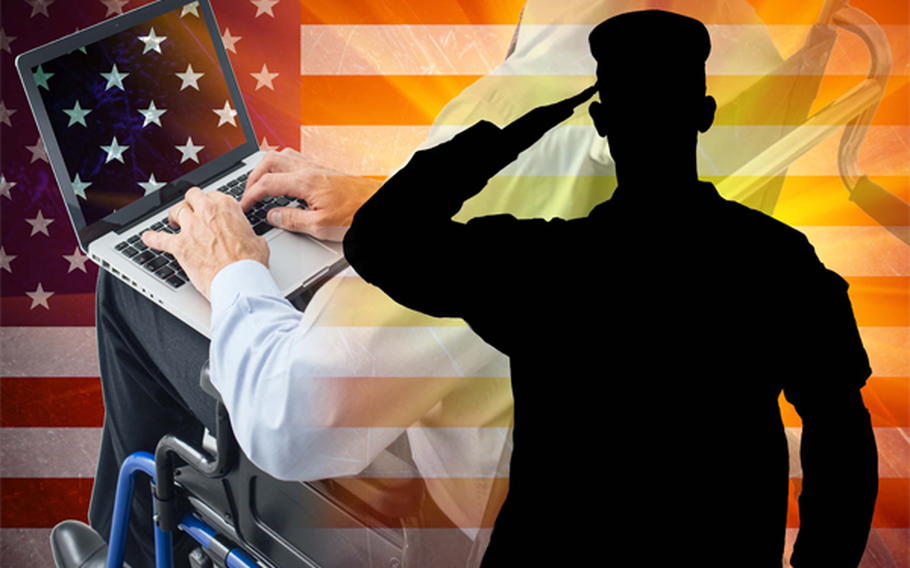While Capitol Hill continues to debate whether newly proposed legislation will impact veterans’ health benefits, many of our nation’s heroes are facing health challenges, both visible and invisible. Transitioning from active duty to civilian life can be difficult, as can managing a disability. Taken together, veterans with disabilities can struggle to navigate a complex benefits system, interpret all the options available, and determine which benefits may apply to their situation.
All citizens, especially those who have dedicated their lives to the armed services — sometimes sacrificing their physical health in service to the nation — deserve to feel financially secure and supported on their health care journey. However, veterans are often unaware of the full arsenal of benefits that are available to help them achieve stability.
When individuals enlist in the armed forces, they may anticipate a tough road ahead; however, they are likely more concerned with difficult deployments or stressful combat rather than incurring a disability either on the job or later in life.
When an unforeseen disability renders the service member unable to work, it can leave them feeling particularly vulnerable. According to a 2022 survey conducted by Allsup, a nationwide provider of disability representation (I am a Department of Veterans Affairs-accredited claims agent at Allsup), nearly one-third of veterans who file for VA disability benefits do so more than 10 years after they leave the military, as many are daunted by the complexities of the disability claim process.
The same survey reported that more than half of veterans are unaware they could qualify for both VA and Social Security disability benefits, otherwise known as Social Security Disability Insurance, or SSDI. This is an important gap in knowledge and carries long-term implications for veterans, who may miss out on valuable access to income, dependent benefits and other components of this federal disability insurance program.
About 1.5 million veterans live below the federal poverty level, and an additional 2.4 million veterans were living paycheck to paycheck before the pandemic, a number that has since surged. According to the Department of Labor, between April 2022 and March 2023, the unemployment rate for veterans with a disability was 5.3%, more than double that of veterans without a disability (2.4%) and more than the national average unemployment rate (3.4%).
Despite these statistics, the outcome does not have to be bleak. Veterans have avenues to pursue support, overcome the complexity of navigating disability benefits programs, and receive the help and care they deserve. More importantly, efforts to improve awareness about these benefits can make a difference in filling the gap. Civilians can help with communication efforts, assist veterans by connecting them with advocates who understand the disability benefits system, and voice their support for expanded benefits for veterans.
Recent data from the Americans with Disabilities Act National Network found that “nearly a third (29.6%, 3.5 million) of the 12 million veterans ages 21-64 report having a disability.” However, only about 950,000 were receiving SSDI benefits as of 2016, the most recent year for which data is available. If we make the comparison of data, then that appears to leave nearly 9 million veterans with disabilities unaccounted for – many of whom could be eligible for SSDI benefits to help alleviate financial hardships they may be facing.
Veterans who are unable to work may feel limited in their options, especially as factors outside of their control, such as inflation and a slow economy, put more stress on Americans’ wallets.
Thanks to colleagues, veterans services and various VA materials, many veterans know that the VA administers and pays disability compensation to those with a condition incurred during active military duty. Many veterans don’t realize that the Social Security Administration oversees and pays disability benefits to those with severe medical conditions who are unable to work for 12 months or longer, or have a terminal health condition.
The two disability benefits are separate programs, so each benefit must be claimed separately. It’s possible the prospect of filing a claim, and possibly facing multiple appeals in the two disability programs, feels overwhelming. However, assistance exists in the form of advocates who help veterans with the multiple steps, including forms, medical evidence and submission process required through both the VA and SSA.
To make the most of these financial alternatives, veterans must be made aware of the programs that exist, especially when they lack the knowledge or instruction regarding the requirements that could make them eligible. Community members, including fellow veterans, civilians, political leaders and health care advisers, play a crucial role in ensuring that former service members with disabilities do not fall through the current gaps in a system that results in a maze of confusion. This is especially important given the current circumstances in which many veterans with disabilities find themselves.
For veterans who cannot work, there are ways to manage finances, leverage benefits and ensure they have the resources they need to feel secure. After selflessly sacrificing their lives, and at times, their health, for the citizens of our nation, it is our responsibility to ensure veterans are met with support as they transition to civilian life and manage their disability. Education about the breadth of benefits that are available to them is the essential first step, so veterans attain the financial security and disability benefits they have earned.
Brett Buchanan, a veteran of the U.S. Army, is a VA-accredited claims agent at Allsup, a nationwide provider of disability representation located in Belleville, Ill., who guides veterans through the U.S. Department of Veterans Affairs’ disability appeals process.

(U.S. Bureau of Labor Statistics)